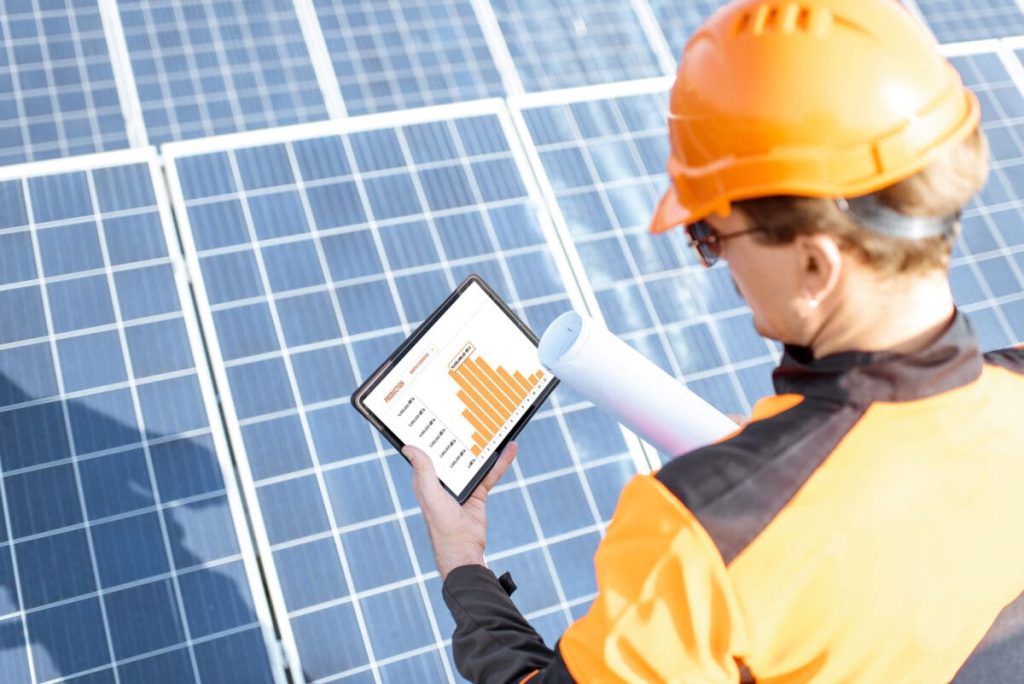
Our modern world depends upon a steady and reliable supply of readily available electrical energy. Historically, electrical energy production was primarily supplied by fossil fuels. However, over the past few decades, significant progress has been made in integrating renewable energy sources such as wind, wave, and solar power into the grid. It is now evident that our energy future cannot and should not rely on a single type of resource to meet the demands of our power-hungry society.
Instead, a diversified approach is essential, where renewable resources collaborate with sustainable energy storage systems and conventional power production to ensure a reliable electricity supply. Successfully managing this dynamic electrical power production system now and in the future requires leveraging advanced energy data analytics. These tools enable both holistic and granular monitoring and modeling of electrical power production and delivery, facilitating the effective management of energy resources to meet demand and anticipate critical needs.
What is Energy Data Analytics?
Energy data analytics involves the use of smart grid technologies and data-driven insights to manage and optimize electrical energy production. It involves the collection, analysis, and interpretation of data from various sources, such as power grids, renewable energy installations, energy storage systems, and consumer usage behavior.
The goal is to enhance energy efficiency, predict demand, and ensure a reliable and sustainable energy supply. Since energy production has become a very complex endeavor, energy data analytics has become essential. In the past, electrical power production relied primarily on the predictable amount of energy that could be extracted from fossil fuel resources.
Today, the integration of renewable sources like wind and solar, which are inherently variable, has made it necessary to incorporate sophisticated analytical approaches to maintain grid stability. Energy data analytics makes this possible by enabling real-time monitoring and predictive modeling to balance supply and demand effectively.
The Role of Data Analytics in the Energy Sector
Data analytics play a critical role in efficiently managing modern electrical production in order to predict peak usage times, plan for the impact of weather changes on solar and wind energy generation and prevent outages. These systems leverage both granular data, such as consumer energy usage patterns, and holistic data, such as grid performance, to deliver valuable information. Advanced analytics suites incorporate machine learning, artificial intelligence, and big data to forecast energy demand, identify inefficiencies, and optimize resource allocation.
Energy data analytics facilitate the seamless integration of renewable energy sources with traditional power systems, offering just-in-time metrics to grid operators to maintain balance and reliability. Another crucial application of data analytics in electrical production is energy storage management. By optimizing the charging and discharging of batteries, these systems minimize waste and maximize storage efficiency. These innovations are made possible by the implementation of smart grids, a new approach to electrical power production and distribution.
Unlike traditional grids, which operate on a one-way electricity flow from producers to consumers, smart grids enable two-way communication for real-time monitoring, data collection, and dynamic adjustments. Smart grids gather real-time electricity usage data from households and businesses, track time-of-use patterns to identify peak and off-peak hours, and monitor appliance-specific consumption, such as HVAC systems or electric vehicle charging. Smart grids utilize advanced sensors, data analytics, and automated controls to optimize energy distribution, balance supply and demand, minimize waste, and prevent outages.
This adaptability ensures grid stability, even as renewable energy contributions fluctuate. Additionally, smart grids enhance energy efficiency and empower consumers through smart meters, which provide real-time usage data, enabling households and businesses to adjust consumption patterns and reduce costs. By leveraging real-time pricing data, smart grids facilitate dynamic rate adjustments and promote load-shifting through targeted incentives that influence consumer behavior.
Advanced data analytics support grid-edge monitoring, managing power flow and communication between low-voltage distribution systems and end-users. This capability enables real-time oversight and control of distributed energy resources at the edge of the power distribution network.
Key Benefits of Energy Data Analytics
When it comes to energy data analytics, efficiently meeting the electrical demands of our modern world requires optimizing both production and delivery systems. Beyond tracking consumer demand and production levels, data analytic systems closely monitor the grid by analyzing voltage levels across nodes, current flow, power factors, frequency stability, fluctuations, and line losses during transmission and distribution.
These systems also assess the health of critical infrastructure, including transformer temperatures, substation equipment diagnostics, alarm systems, cable integrity, fault detection metrics, and power outage locations and durations. This vigilant monitoring is essential to ensure the timely and reliable delivery of electrical energy to consumers.
Furthermore, with the growing adoption of solar panels, wind turbines, and other distributed-energy resources by homes and businesses, smart grids also regulate and monitor the bidirectional flow of power back to the grid from these renewable sources. Energy data analytics allows utilities to identify inefficiencies in production and delivery which helps to minimize reliance on carbon-intensive “peaker” plants, reducing greenhouse gas emissions and promoting cleaner energy solutions.
By accommodating distributed energy resources, smart grids reduce dependence on fossil fuels, enhance grid resilience, and support the transition to a low-carbon economy. By leveraging data to improve efficiency, integrate renewables, and empower consumers, these technologies reduce environmental impact and pave the way for a more sustainable and resilient energy future.
Turning Insights into Action with Energy Analytics
At the forefront of the energy sector, machine learning and artificial intelligence are revolutionizing data analytics, driving advancements in forecasting, optimization, and decision-making. These cutting-edge technologies enable precise predictions, such as forecasting supply-and-demand trends up to 36 hours in advance, estimating electricity output from renewable sources, and analyzing weather patterns to enhance energy distribution.
By leveraging insights from these tools, utilities can make data-driven decisions to dynamically adapt to shifting energy demands, integrate renewable energy more effectively, and minimize inefficiencies. A compelling example is Google’s DeepMind, which improved renewable energy fleet efficiency by 20% using artificial intelligence.
Advanced analytics also enable the use of dynamic operating envelopes, which provide real-time flexibility in grid management. This innovation optimizes transformer capacity utilization, enhances load modeling accuracy, and improves event detection to reduce outages.
As energy systems become more complex, dynamic operating envelopes play a critical role in ensuring grid stability and resilience, even with increased integration of renewable energy. However, the path to fully unlocking the potential of energy data analytics includes challenges such as regulatory compliance, data privacy, and the integration of diverse data streams. Addressing these barriers is crucial to advancing a more efficient, reliable, and sustainable energy future.
How Data Analytics Can Improve Energy Efficiency
Advancements in energy data analytics are driving the transition to more sustainable, efficient, and reliable energy systems. As the field continues to evolve, we can expect even more innovative applications that will shape the future of the energy sector. Emerging technologies, such as blockchain for energy transactions and IoT-enabled devices (Internet of Things, also known as “smart devices”) for granular monitoring, are set to revolutionize the sector further.
Beyond technical optimization, energy data analytics supports environmental and economic goals. By reducing energy waste and enhancing the use of renewables, it minimizes carbon footprints and lowers operational costs. It empowers utilities, businesses, and consumers to make informed decisions, paving the way for a sustainable energy future.
Join the Energy Revolution at Unity Environmental University
Unity Environmental University is committed to preparing the next generation of leaders in energy and sustainability. Our BS in Sustainable Business Management – Renewable Energy Focus Area equips students with the knowledge and skills to leverage energy data analytics for real-world impact. Explore how our program empowers students to address environmental challenges, reduce carbon footprints, and contribute to a sustainable energy future. Join us in turning insight into action and shaping a more resilient, low-carbon world.
Written by Bruce Brazell, Associate Professor of Practice of Mathematics.



